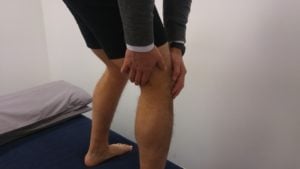 An often unheard of yet complex condition we encounter as Physiotherapists is an injury to the back corner of the knee. Painful and destabilising, it is an injury that is often overlooked and, due to its complex nature, is often mistreated. However, we are growing in our understanding of both what it is and how it functions. To summarise read on!
An often unheard of yet complex condition we encounter as Physiotherapists is an injury to the back corner of the knee. Painful and destabilising, it is an injury that is often overlooked and, due to its complex nature, is often mistreated. However, we are growing in our understanding of both what it is and how it functions. To summarise read on!
So what is the Posterolateral Corner of the knee (PLC)?
The PLC is a complex arrangement of ligaments, tendons, muscles and other soft tissue structures that provide stability to the outside and back portions of the knee. It is complex in that it relies on a joint effort of all the structures in the region to prevent your knee collapsing outwards. Interestingly, some individuals do not contain the same structures in their PLC as others. Frustratingly, some researchers name the same structures within the PLC differently, making it hard to research what structures provide this portion of our knee with stability.
Structures you may have heard of in the PLC include the Iliotibial Band (ITB), part of the hamstrings tendon and the Lateral Collateral Ligament (LCL), while there are many more ligaments and soft tissue structures involved.
How do we injure the PLC?
The most common mechanism of injury is to hyperextend your knee with the knee buckling outwards. Usually this happens with the knee straight and taking a blow to the inside of the knee, like a rugby tackle, or bad soccer challenge which shunts the knee in a diagonal angle backward and away from the other knee.
Another example of how we can injure the PLC is by hyper-extending and twisting the knee at the same time, such as landing awkwardly after jumping or changing directions unexpectedly in a game of basketball.
It is very common to injure your PLC when you injure your Anterior Cruciate Ligament (ACL) or Posterior Cruciate Ligament (PCL) or both.
Outside of sporting injuries, falls and traffic accidents are the next most common methods of injury.
How do we diagnose a PLC injury?
In an acute injury you would notice swelling, especially to the back corner of the knee, pain, and sometimes numbness and weakness to the foot if you are unlucky enough to affect the peroneal nerve.
As the swelling settles it is common to notice more movement as you hyperextend your knee during walking compared to the other side, and a sense of instability.
If you have had the injury for a while you are more likely to notice pain in either the inside or outside of the knee, weakness and or numbness from the outside of the knee to the foot, and instability especially with going up or down stairs.
As Physiotherapists we look at your walking and note any asymmetries. There are a number of tests we also include to hone in on specific structures. And if indicated we may refer you for an Xray and/or MRI.
How do we treat PLC injuries?
Rest assured this is a knee condition that can be treated. We improve your knee through a range of guided exercises, including reducing pain, strengthening, improving proprioception and mobility.
Treatment is highly goal dependant and we tailor to your specific needs. Whether it’s football with the kids, riding your bike through the Pyrenees, skiing, social sports or otherwise.
If you think you have a Posterolateral Corner Knee injury come in and get it assessed by one of our experienced Physiotherapists at Bend + Mend.





